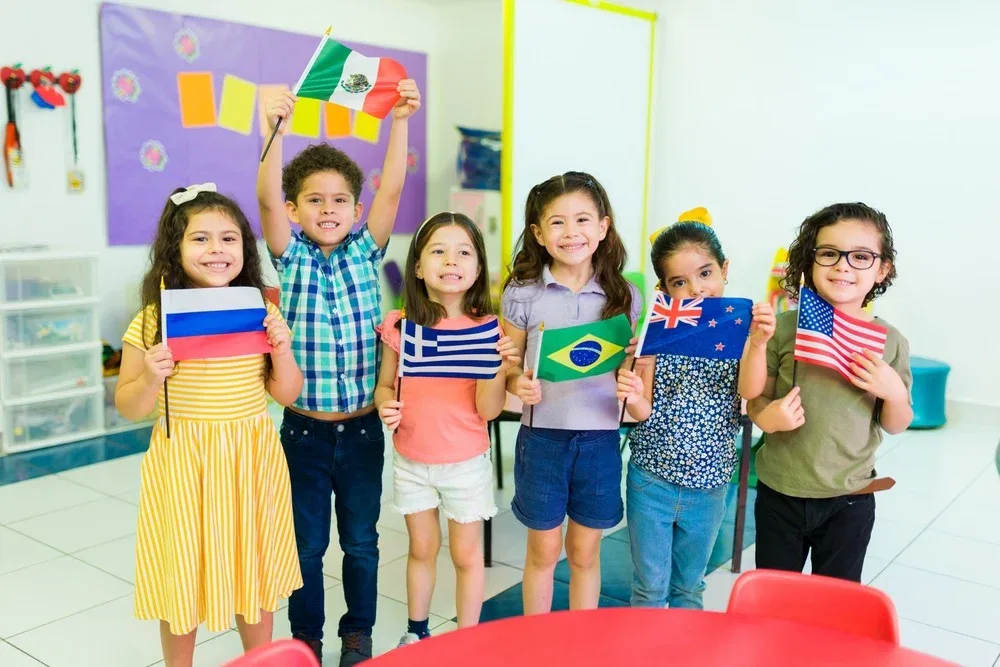
In the intricate dance of a child’s development, the early years are the foundation for a lifetime of learning and understanding. Cultural immersion in infancy emerges as a powerful strategy, a gateway to broadening a child’s perspective, fostering curiosity, and building a strong foundation for cultural intelligence. This article delves into the significance of exposing infants to diverse cultures, emphasizing its profound impact on their cognitive, emotional, and social development.
Contents
Understanding Cultural Immersion
Cultural immersion, in essence, involves exposing infants to a variety of cultural experiences from an early age. This exposure goes beyond mere observation, aiming to integrate cultural elements into the child’s daily life. This approach enables infants to appreciate diversity and cultivates a sense of openness to different ways of life.
Benefits of Early Exposure
Early exposure to cultural immersion offers numerous benefits for children, fostering holistic development and preparing them for a globalized world. Here are some key advantages:
Cognitive Development
Early exposure to diverse cultures stimulates cognitive development by enhancing neural connections. Infants exposed to different languages, traditions, and customs show increased problem-solving abilities and cognitive flexibility.
Emotional Intelligence
Cultural immersion fosters emotional intelligence by teaching infants to recognize and understand various emotions expressed in different cultural contexts. This early exposure promotes empathy, a crucial component of emotional intelligence.
Social Skills
Infants exposed to cultural diversity tend to develop robust social skills. They learn to navigate different social norms and adapt to various communication styles, laying the groundwork for successful interpersonal relationships later in life.
Open-mindedness and Flexibility
Exposure to diverse cultures encourages open-mindedness and flexibility in thinking. Children learn to adapt to new situations and become more accepting of different viewpoints, which can be valuable in personal and professional settings.
Cultural Competence
Early exposure lays the foundation for cultural competence, a crucial skill in today’s interconnected world. Children who grow up exposed to different cultures are better equipped to interact successfully with people from diverse backgrounds in their personal and professional lives.
Practical Approaches to Cultural Immersion
Understanding and respecting diverse cultural practices become paramount as caregivers aim to provide infants with an environment that aligns with the community’s values and customs.

In this multifaceted journey, several practical approaches serve as gateways to a profound comprehension of cultural intricacies in infant care.
Multilingual Environments
Create an environment where infants are exposed to multiple languages. This can be achieved through interactions with caregivers, books, teaching foreign languages, and multimedia content.
Cultural Celebrations
Participate in cultural celebrations and festivals to expose infants to diverse traditions, music, and cuisine. This hands-on experience creates lasting impressions.
Global Playmates
Encourage interaction with peers from different cultural backgrounds. Playing with children from diverse backgrounds enhances social skills and creates a sense of unity in diversity.
Bursting the Bubble: Perplexity in Cultural Immersion
Achieving a balance between variety and specificity is crucial in cultural immersion. Too much diversity without context can lead to confusion, while too much focus on a single culture may limit a child’s worldview.

Striking the right balance ensures perplexity – a state of being puzzled that fuels curiosity and active learning.
The Role of Perplexity in Cultural Intelligence
Perplexity in cultural immersion catalyzes the development of cultural intelligence. It prompts children to ask questions, seek answers, and develop a genuine interest in understanding the world around them. Parents and caregivers are vital in guiding this process, providing context and narratives that help make sense of the diverse cultural experiences.
FAQs
How early should cultural immersion begin?
Cultural immersion can start as early as infancy. From the beginning, exposing infants to diverse cultures sets the stage for lifelong appreciation.
What if a child shows resistance to cultural immersion?
It’s essential to respect a child’s pace. Gradual exposure, positive reinforcement, and incorporating cultural elements into enjoyable activities can help overcome resistance.
Can cultural immersion be achieved in a monolingual household?
Absolutely. Introducing diverse books, music, and activities can provide a rich cultural experience, even in a monolingual environment.
Are there potential challenges in cultural immersion?
Challenges may arise, such as confusion or resistance. Addressing these challenges with patience, understanding, and open communication is key.
How can schools promote cultural immersion?
Schools can integrate multicultural curriculum, celebrate diverse events, and encourage interactions among students from various cultural backgrounds.
Conclusion
Cultural immersion in infancy is a powerful tool for shaping open-minded, empathetic, and culturally intelligent individuals. As infants explore the rich tapestry of the world’s cultures, they lay the foundation for a lifetime of learning and appreciation. By embracing perplexity and burstiness, parents and caregivers can ensure a holistic approach that sparks curiosity and enriches a child’s developmental journey.
If you’re searching for top-notch care and developmental support for your precious little one, your quest ends with DeeCyDa Daycare. Our devoted team is wholeheartedly committed to delivering the highest quality daycare services for infants, fostering their growth and well-being. Enroll with us today.

